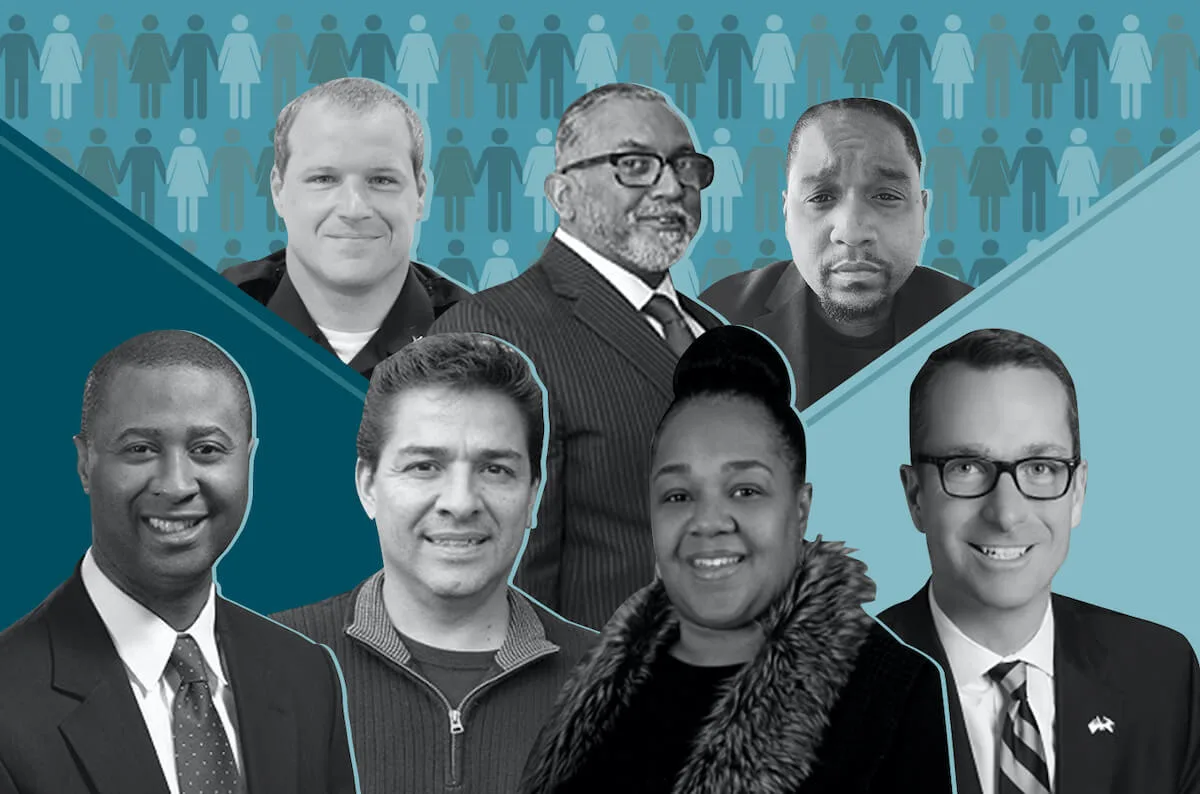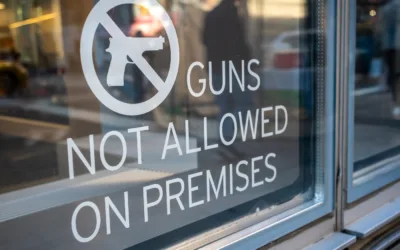
#image_title
Spokeswoman says the group is on “an aggressive pace,” months after the Assembly Speaker dismissed pleas for immediate action.
When Tory Lowe first spoke with the co-chairs of the Speaker’s Task Force on Racial Disparities in August, he made it clear he didn’t want to waste his—or the people of Wisconsin’s—time.
“You shouldn’t put me on this task force,” Lowe told them, he recalled with a laugh. “I’m gonna be the wrong person to put on this task force if it’s gonna be a dog and pony show, because I will expose the truth.”
Four months later, Lowe, a Milwaukee-based advocate for victims of injustices, said he currently has nothing to expose.
Lowe isn’t ready to call the task force a success or sing its praises, but he is not alone in being cautiously optimistic that this task force may be a rare one that lives up to its mission. There are 32 members in all, with four state representatives—two Republicans and two Democrats—rounding out the ranks of 28 community members selected from a pool of more than 100 applicants. UpNorthNews interviewed seven of the task force’s community members, ranging from educators to a police chief, and most gave a generally positive assessment of the group’s work so far.
Democrats lambasted the task force as soon as Assembly Speaker Robin Vos (R-Rochester) formed it in lieu of taking action on a package of police-reform bills that would have enacted popular provisions such as banning no-knock warrants and chokeholds, policing tactics that have proven deadly.
Vos said the task force would present bipartisan proposals to broadly address racial disparities in the state sometime in January—five months after the Jacob Blake shooting, and eight months after Minneapolis police murdered George Floyd.
Gov. Tony Evers said “the people of Wisconsin don’t want another task force or more delays,” channeling frustration with past task forces that have resulted in little or no change. But there are exceptions, such as the state’s opioid-abuse task force, which successfully passed about 30 proposals under former Gov. Scott Walker.
It’s not as if the racial disparities task force has any shortage of material to work with. Wisconsin is consistently ranked as one of the worst states for people of color, especially Black residents, based on metrics such as homeownership, income, incarceration, educational achievement, and infant mortality.
In October, the task force—led by Assembly Majority Leader Jim Steineke (R-Kaukauna), who is white, and Rep. Shelia Stubbs (D-Madison), who is Black—held its first meeting of the entire group.
After that initial meeting, the members split into two subcommittees, one focused on policing—chaired by Steineke and Stubbs—and the other on education and workforce development—chaired by Reps. Kalan Haywood (D-Milwaukee), who is Black, and Robert Wittke (R-Racine), who is white. Both groups met twice and are set to meet a third time in January, raising the question of whether the task force will meet its January target for recommendations.
Steineke said earlier this month he is “optimistic” the task force will present “a number of thoughtful proposals for our Legislature to consider in the weeks to come.”
Alesha Emmert, Steineke’s communications director, told UpNorthNews in an email the task force is on “an aggressive pace.” Emmert did not respond to a request for an interview with Steineke. Stubbs’ office declined to make her available for an interview and requested written questions, but did not respond to them.
Task force members told UpNorthNews that it’s too early to tell whether the body will meet its deadline. Neither subcommittee has formed proposals yet.
Education and Workforce Group ‘Hopeful’
“I wish I could tell you we’re ready to do X, Y, Z,” said Damond Boatwright, regional president of hospital operations for SSM Health Wisconsin and a member of the workforce and education subcommittee. “We’re not there. We’re really in the discovery phase.”
Still, Boatwright, who is Black, said he is “very encouraged so far by what looks to be bipartisan, shared goals.”
Subcommittee member Ted Neitzke, CEO of Oshkosh-based education service agency CESA 6, said he thinks February or March will be the most likely time for proposals from his committee.
The three education and workforce subcommittee members UpNorthNews spoke with held more uniformly favorable views than those on the policing subcommittee. Neitzke, who is white, and Boatwright spoke to the importance of the work.
“I think the task force has a responsibility to demonstrate this isn’t just a Milwaukee and Madison thing; this is a Wisconsin thing,” said Neitzke, also the former West Bend School District Superintendent.
Disparities are present across the state, Neitzke said, whether in predominantly Indigenous schools or in rural districts that have just a few students of color who don’t see themselves represented in school staff.
Between its two meetings, the education and workforce subcommittee received presentations on disparities from the state Department of Public Instruction, Department of Workforce Development, and Wisconsin Housing and Economic Development Authority. Speakers covered topics like Wisconsin’s nation-worst racial educational achievement gap and economic disparities; for instance, compared to white residents, Wisconsin is ranked 50th in Black per capita income, 41st for Latinos, 39th for Native Americans, and 47th for Asians.
Marcio Sierra, president and senior pastor of Lighthouse Christian School in Madison, also gave a presentation in favor of the school choice program that lets low-income students attend private schools with taxpayer-funded vouchers; Sierra said voucher students at his school have been successful but acknowledged school choice isn’t the only answer.
School choice has delivered mixed results and may even widen the racial achievement gap; school choice also comes at the monetary expense of the vast majority of children who attend public schools.
Linda Fair, a subcommittee member and academic adviser at Blackhawk Technical College near Janesville, told UpNorthNews the presentations have both saddened her and made her hopeful for improvements. She was especially pleased by the diversity of the task force along ideological, ethnic, and professional lines.
“This is gonna affect everyone, so we might as well come together,” said Fair, who is Black. “I think it’s a good group. I do think a majority of Wisconsin is represented, and I do think that is very key, too, from smaller towns to bigger cities such as Milwaukee.”
Police Issues Group ‘Underperforming’
The police policy and procedures subcommittee has been the subject of a more decidedly partisan divide, right down to the materials provided to committee members.
While there were duelling police reform packages forwarded following the Floyd murder and Blake shooting in Kenosha, committee members were only provided a standalone summary of the Republican package authored by Sen. Van Wanggaard (R-Racine), a former Racine police officer.
Democratic proposals did not get equal treatment and were only included in a separate memo that compared them with Wanggaard’s bills and the Wisconsin Professional Police Association’s “Blueprint for Change,” according to copies of the memos provided to UpNorthNews by subcommittee member Fred Royal, president of the Milwaukee NAACP. Tony Gonzalez, the founder and co-chair of Toward One Wausau, who also serves on the subcommittee, confirmed members weren’t given Democratic proposals.
“I think that we’re gonna be working on a limited scope,” said Royal, who described the task force as “underperforming.”
Despite this, there has been general consensus on some ideas, such as establishing a statewide police use-of-force database, giving all officers body cameras, and putting cops through crisis intervention training.
But at the second subcommittee meeting, Steineke cautioned that the group may not be successful in implementing any of these as a requirement; lawmakers and law enforcement officials might push back on mandates by citing the costs.
“When we have that discussion, a lot of things will swing back to the fiscal side of things and whether there’s a requirement for all law enforcement officers, for example, to wear body cameras, how is that gonna be funded?” Rice Lake Police Chief Steven Roux, a subcommittee member, told UpNorthNews. “Most agencies are small, and being able to afford that is gonna be really difficult.”
Because of this, Roux, who is also the second vice president of the Wisconsin Chiefs of Police Association, said he wasn’t sure what recommendations might ultimately come out of the subcommittee.
Even then, recommendations don’t mean much without a legislative mandate, said Gonzalez, founder of Toward One Wausau. He said it appears as if the task force will ultimately make non-mandatory recommendations, a possibility he said would disappoint him.
“Mere recommendations without any actual engraving in stone will go nowhere,” Gonzalez said. “Because otherwise it becomes subject to pure interpretation, you know? We do need to come up with firm proposals and legislation that would support that kind of stuff.”
Gonzalez also said he doesn’t buy into the claims that police departments couldn’t cover expenses like body cameras or crisis intervention training.
“The funds have been there. They just need to be repurposed,” Gonzalez said, noting how some small departments have mine-resistant military vehicles for no discernible reason.
Another prevailing thought among the subcommittee’s discussions has been the need for better mental health treatment for police officers.
Mike Crum, a resiliency trainer who primarily works with soldiers and veterans, advocated for police resiliency training in the subcommittee’s second meeting. However, he struck a dissonant chord with some members of the subcommittee when he did not initially speak about ways to reduce racial biases in law enforcement and instead suggested this training could benefit officers’ mental health after they fatally shoot someone.
“We’re not talking about preventing officers who have these biases embedded in them being hired on the police force,” Royal told Crum. “We’re talking about giving them treatment after they’ve been traumatized by the trauma they’ve inflicted on the society that they’re supposed to support and make secure. I just find that ironic.”
Crum defended resiliency training and said it can also be used to “detect icebergs” of racial bias in police, and that it encourages police to call out their fellow officers if they recognize bias.
It still remains to be seen what exactly will come out of the task force and if the Legislature—which has not met since April 15—will discuss proposals, let alone enact them into law. Until then, task force members like Lowe, the Milwaukee victims advocate, will remain hopeful but skeptical.
“When we actually put pen to the pad and start saying these are the ideas that we’re going to address, that’s when I’ll know if it’s bulls–t,” Lowe said.

Radon is High in Wisconsin: How to Protect Your Family
Radon is a naturally occurring, radioactive gas. It can get into your house through cracks in the foundation, walls, and openings around pipes and...

Is that a drone or a plane? Experts help explain the differences
By JOHN SEEWER and MARK SCOLFORO Associated Press Up in the sky, is that a drone, a plane or a helicopter? Experts who study unmanned aircraft...

Multiple deaths in shooting at Abundant Life Christian School in Madison
The suspected shooter, a juvenile, is thought to be among those killed. At least six others have been wounded, as well. NOTE: This is an active...

FBI figures show 15% drop in violent crime in 2024
During the first quarter of 2024, there’s also been a 13% drop in aggravated assault, according to the FBI. Murder and rape both decreased by about...




